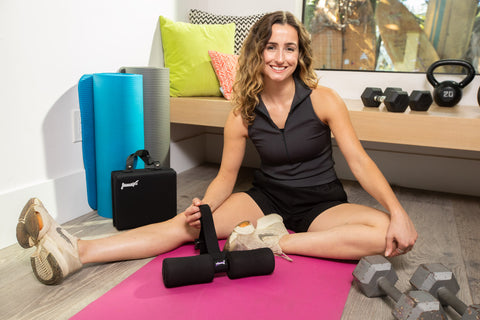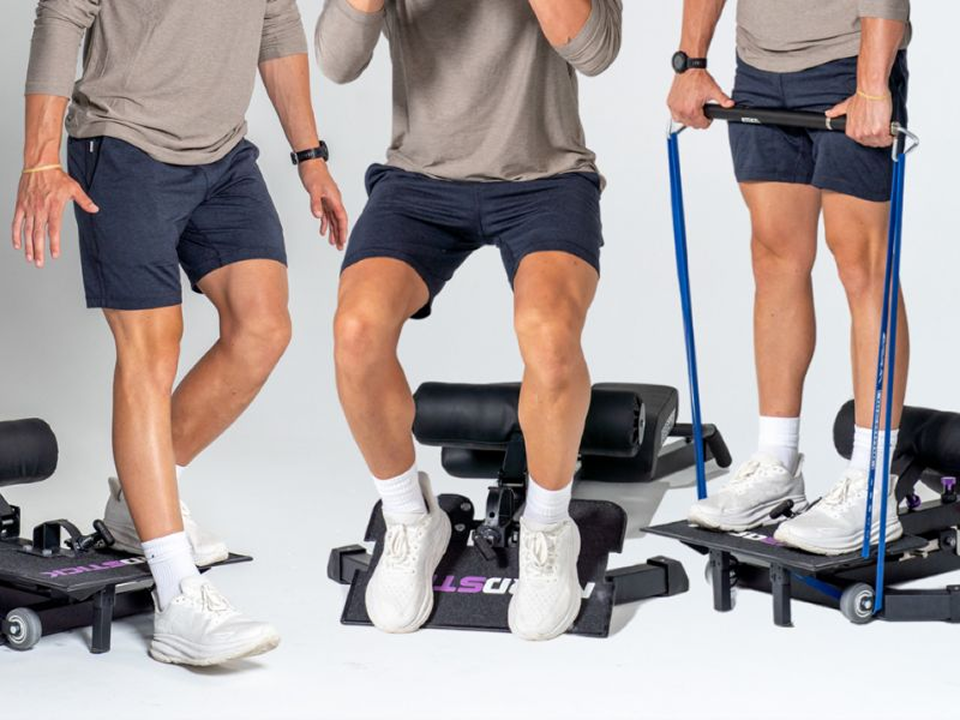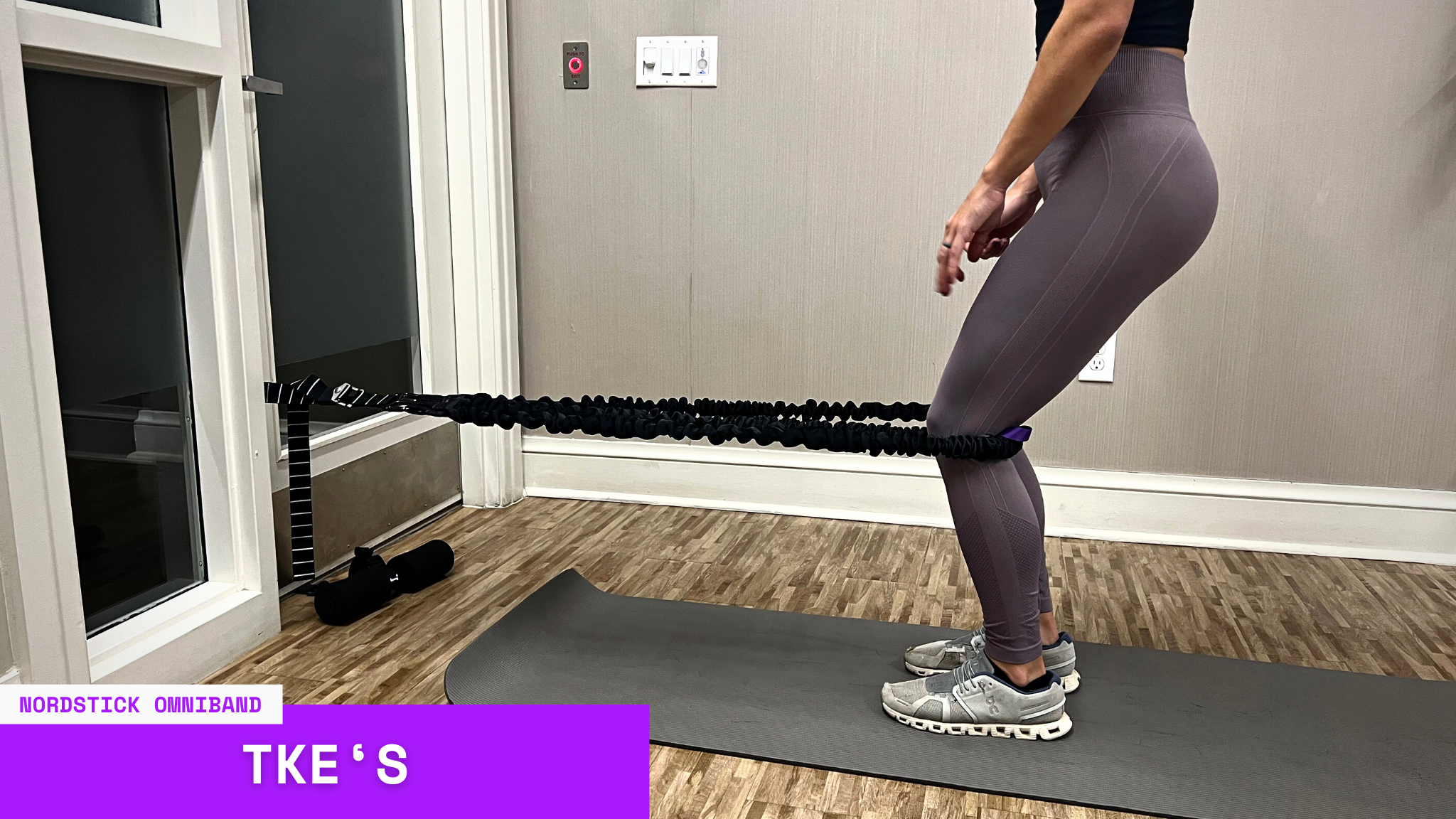Hip pain can be a real hassle, affecting everything from your morning jog to simply getting up from your desk. But fret not! Dr. Garrett Drumheller, a sports physical therapist and the founder of Nordstick, shares three fantastic exercises to not only alleviate hip pain but strengthen those hips as well.
Hip pain doesn't have to put a damper on your day-to-day activities or hinder your athletic performance. With just a door and an OmniBand (or any set of resistance bands), you can relieve hip pain and bolster those hip muscles for better support and mobility.
Here are three straightforward yet potent exercises designed to tackle that pesky hip discomfort while simultaneously fortifying your hips. Lace-up those sneakers and prepare to challenge your hips!
1. Side Plank
The Side Plank isn't just an abdominal torcher; it's a full-body exercise that emphasizes your hip muscles.
Start by lying on your side with your legs straight and feet together. Prop your upper body up on your lower elbow, ensuring it's directly beneath your shoulder for solid support. Lift your hips off the floor, forming a straight line from your heels to your head. For added comfort, lean on your NordPad.
This position not only challenges your balance but actively engages your hip abductors, crucial for stabilizing your pelvis.
For those with hip pain, the Side Plank offers a gentle stretch and strengthens the surrounding muscles, reducing the strain on your hips. If holding the position feels challenging, begin with your knees bent slightly to reduce the load. Aim for holding this position for 20-30 seconds on each side, gradually increasing the time as your strength improves. This exercise supports tissue healing by enhancing blood flow to your hip area, a key component in mitigating discomfort and enhancing recovery.
2. Hip Thrust
Hip Thrusts are a fantastic way to engage your glutes and hip muscles, vital for anyone experiencing hip pain.
Begin by sitting on the ground with your upper back against a Yoga Ball. Place your feet flat on the floor, secured between the door and the Nordstick, and firmly about hip-width apart, and ensure your knees are bent. Pressing your feet into the ground, lift your hips towards the ceiling until your body forms a straight line from your shoulders to your knees.
This movement not only targets the hip flexors and glutes but also offers a chance to strengthen the core and lower back muscles, contributing to better posture and reduced hip pain. The Hip Thrust provides a robust foundation for hip health, helping to alleviate pain by reinforcing the muscles that support your pelvis and spine. For an added challenge, place a resistance band around your thighs just above your knees or hold the position at the top for a few seconds to maximize muscle engagement.
3. Hip Flexor Raise
Often overlooked and even called the hip flexor stretch, the Hip Flexor Raise is a gentle yet effective exercise for those suffering from hip pain. Start by lying flat on your back with one leg bent (foot flat on the floor) and the other leg straight. Slowly lift the straight leg up to the height of the bent knee, keeping your foot flexed. This motion targets the hip flexors, crucial muscles involved in leg movement and stability.
Performing Hip Flexor Raises can help relieve hip pain by stretching and strengthening the hip flexors and supporting lower back muscles. It's a controlled movement that promotes flexibility and aids in the recovery process by encouraging tissue healing. For those with persistent hip issues, incorporating this exercise into your routine can lead to significant improvements in mobility and pain reduction. Aim for 10-15 repetitions on each side, ensuring you maintain a slow and steady pace to maximize the benefits of the stretch and strengthening.

Performing these hip pain exercises with dedication and patience can lead to remarkable improvements in your hip health. Remember, consistency is key—integrating these exercises into your daily routine can help mitigate hip pain and strengthen the hip muscles, offering a solid foundation for your body's mobility and stability. If pain persists or you're unsure about performing any of these exercises, consulting with a physical therapist is always a wise decision. They can provide personalized guidance and modifications to ensure you're getting the most out of your efforts while safeguarding your health. With these exercises in your arsenal, you're well on your way to bidding farewell to hip pain and welcoming stronger, more resilient hips.
Why Strengthen Your Hips?
Strengthening your hips is crucial, not just for athletes but for everyone. Strong hips help with essential daily activities, enhancing walking, stair climbing, and maintaining good posture. You can also try exercises like the butterfly stretch sit with your knees bent, or keeping one leg, like the left leg, straight during stretches. You're not only improving mobility but also safeguarding against injuries.
These exercises, such as a gentle stretch with the left knee flat or engaging the upper body while focusing on the left foot, can contribute to overall health by ensuring that your hip muscles are balanced, flexible, and strong. Engaging in varied hip strengthening and stretching exercises can make everyday movements easier and more efficient, leading to a higher quality of life.
Improve Mobility As You Relieve Hip Pain
From the glute med stretches that prevent your hip from dropping during runs to hip extensions that challenge your balance and hip flexion exercises that target often neglected hip flexors, these exercises are a comprehensive approach to hip health. Strengthening your hips supports tissue healing and can significantly reduce hip pain, enhancing your quality of life.
The Ripple Effect of Strong Hips
Strong hips can positively impact your entire body, from ensuring a stable foundation that prevents lower back pain to improving your gait, making every step more efficient and less strenuous. Athletes, weekend warriors, and even those with sedentary lifestyles can benefit greatly from incorporating these exercises into their routines.
Whether you're an avid runner, or someone looking to relieve hip pain and strengthen your body, these exercises are a simple yet effective starting point. Remember, consistency is key. Integrating these exercises into your daily routine can lead to significant improvements in hip strength, mobility, and pain relief.
Always listen to your body, and if pain persists or you have specific hip problems, consulting a physical therapist or healthcare provider is crucial. With the right approach and exercises like these, your hips can become a source of strength rather than discomfort, supporting a more active and enjoyable lifestyle.



































Leave a comment
This site is protected by hCaptcha and the hCaptcha Privacy Policy and Terms of Service apply.